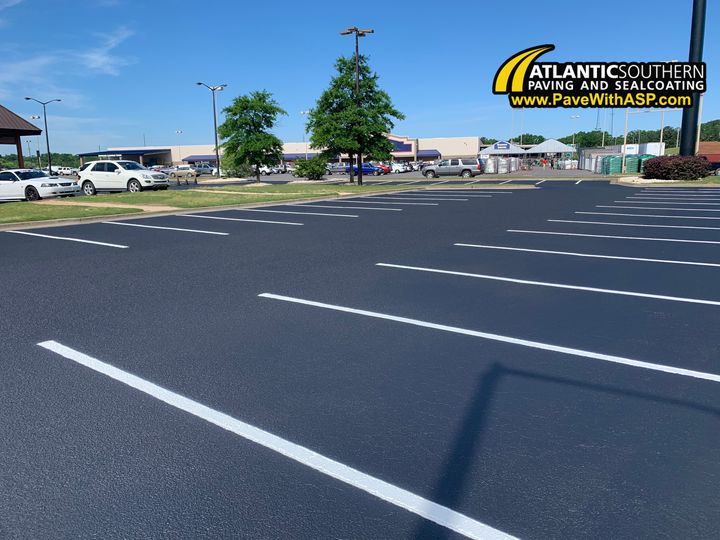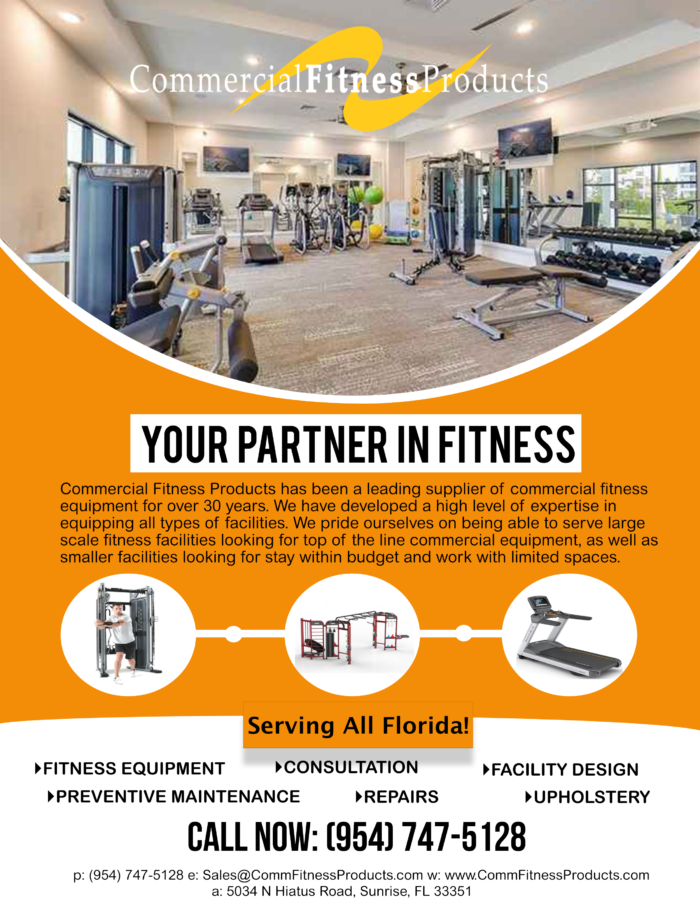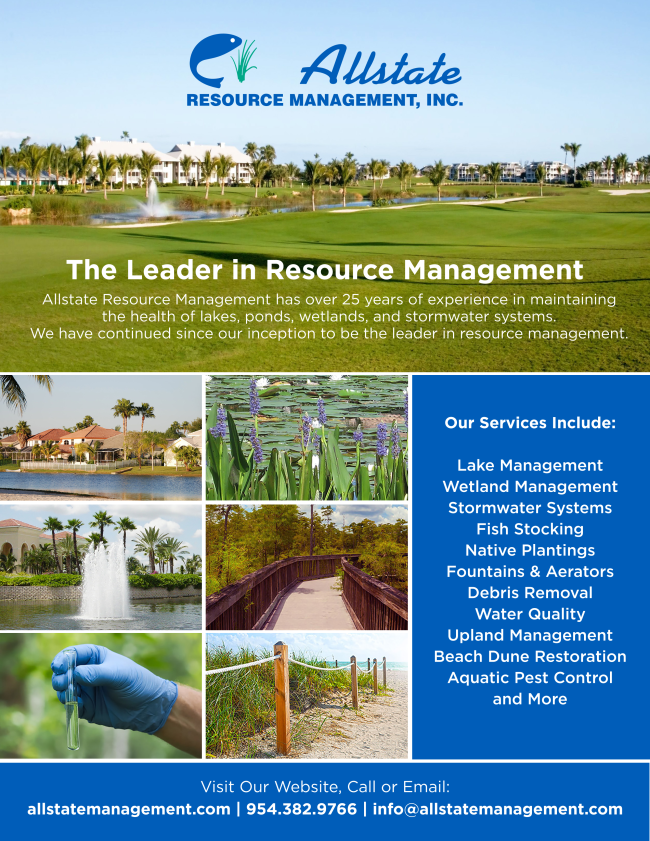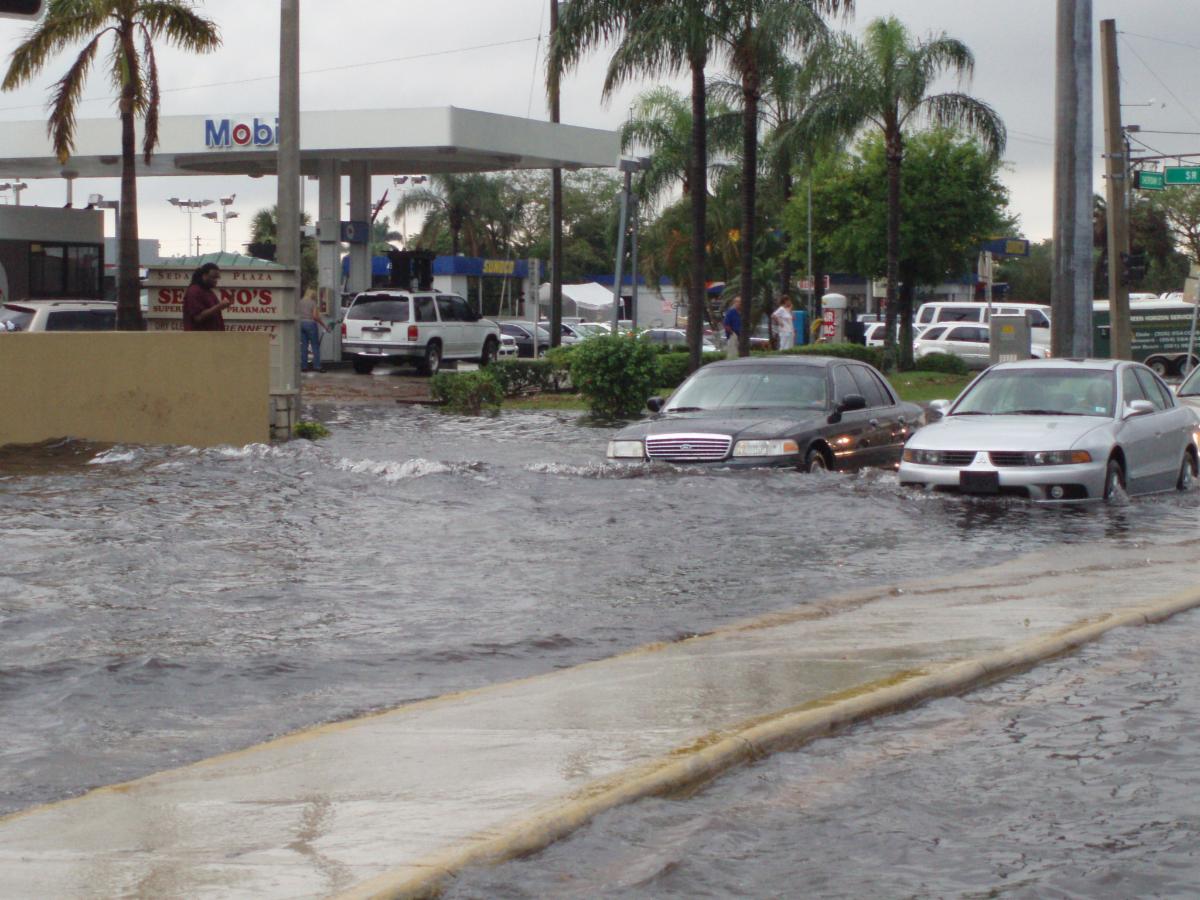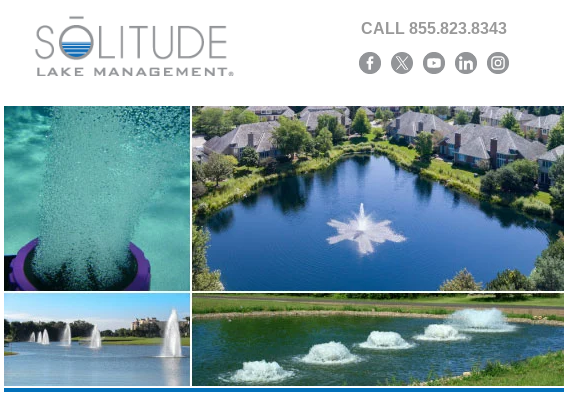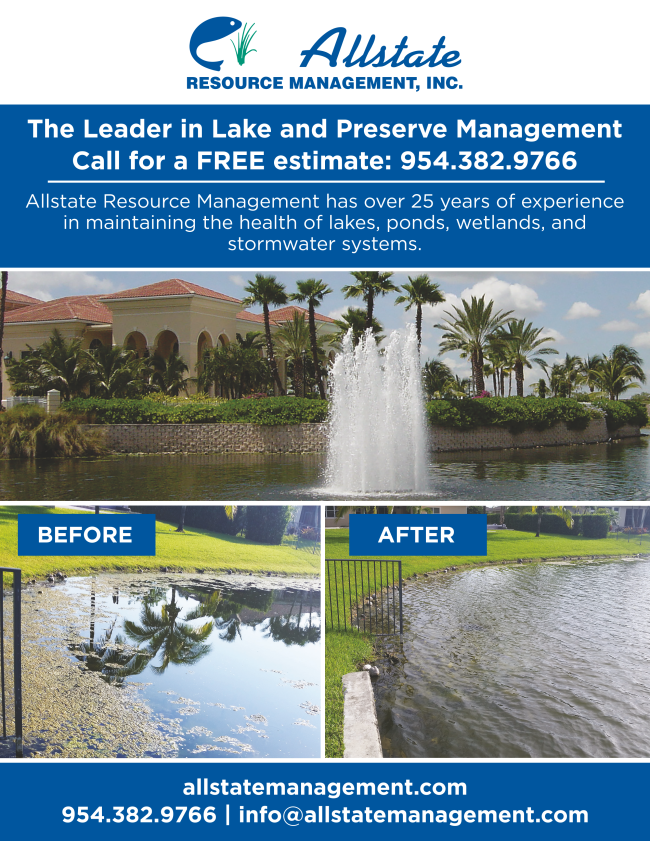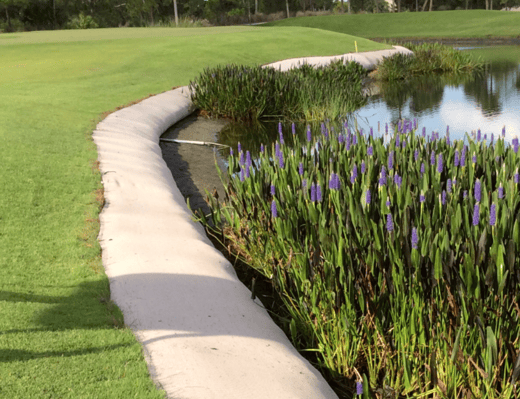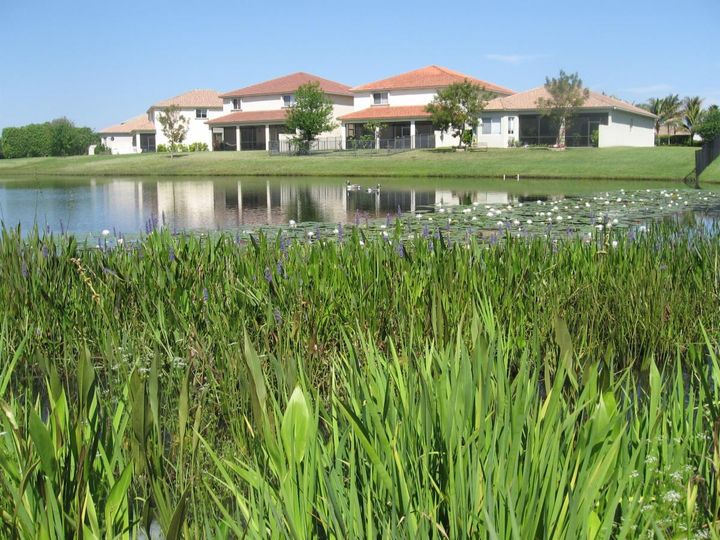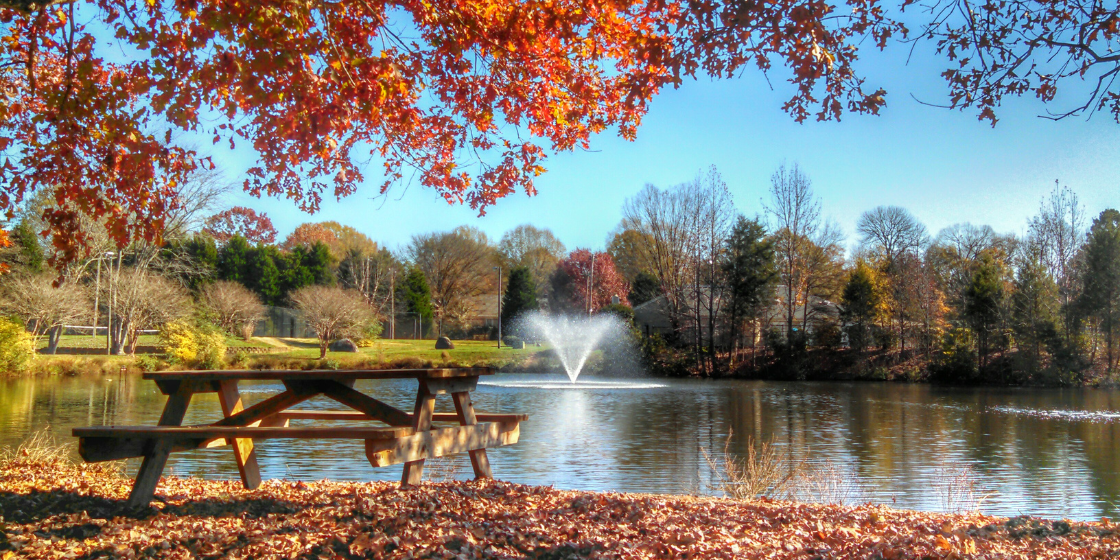Implementing the use of an aeration system is a proactive, and cost-effective approach to controlling a variety of challenges when it comes to pond and lake management. Aeration can drastically improve the health of an aquatic ecosystem. With more balanced water quality, troublesome and hazardous issues like algae and aquatic weeds are less likely to develop.
If a healthy pond is a goal, then aeration is one of the first steps one should take toward achieving a beautiful and balanced ecosystem.
SOLitude Lake Management is a nationwide environmental firm committed to providing sustainable solutions that improve water quality, enhance beauty and preserve natural resources.
SOLitude’s team of aquatic scientists specializes in the development and execution of customized lake, stormwater pond, wetland and fisheries management programs. Services include water quality testing and restoration, algae and aquatic weed control, installation and maintenance of fountains and aeration systems, shoreline erosion control, muck and sediment removal and invasive species management. SOLitude partners with homeowners associations, golf courses, private landowners, businesses and municipalities. SOLitude Lake Management is part of Rentokil, a leading business services company, operating across the United States, Canada and Puerto Rico.
For more information, visit SOLitude Lake Management at solitudelakemanagement.com, and connect on Facebook, LinkedIn and Twitter.
Contact SOLitude from their membership page on SFPMA Members Directory
 Pond aeration is the simple, yet effective, process of increasing oxygen levels in a pond and can not only greatly enhance the aesthetic beauty of a pond, but can also improve the natural systems taking place beneath the water’s surface.
Pond aeration is the simple, yet effective, process of increasing oxygen levels in a pond and can not only greatly enhance the aesthetic beauty of a pond, but can also improve the natural systems taking place beneath the water’s surface.
